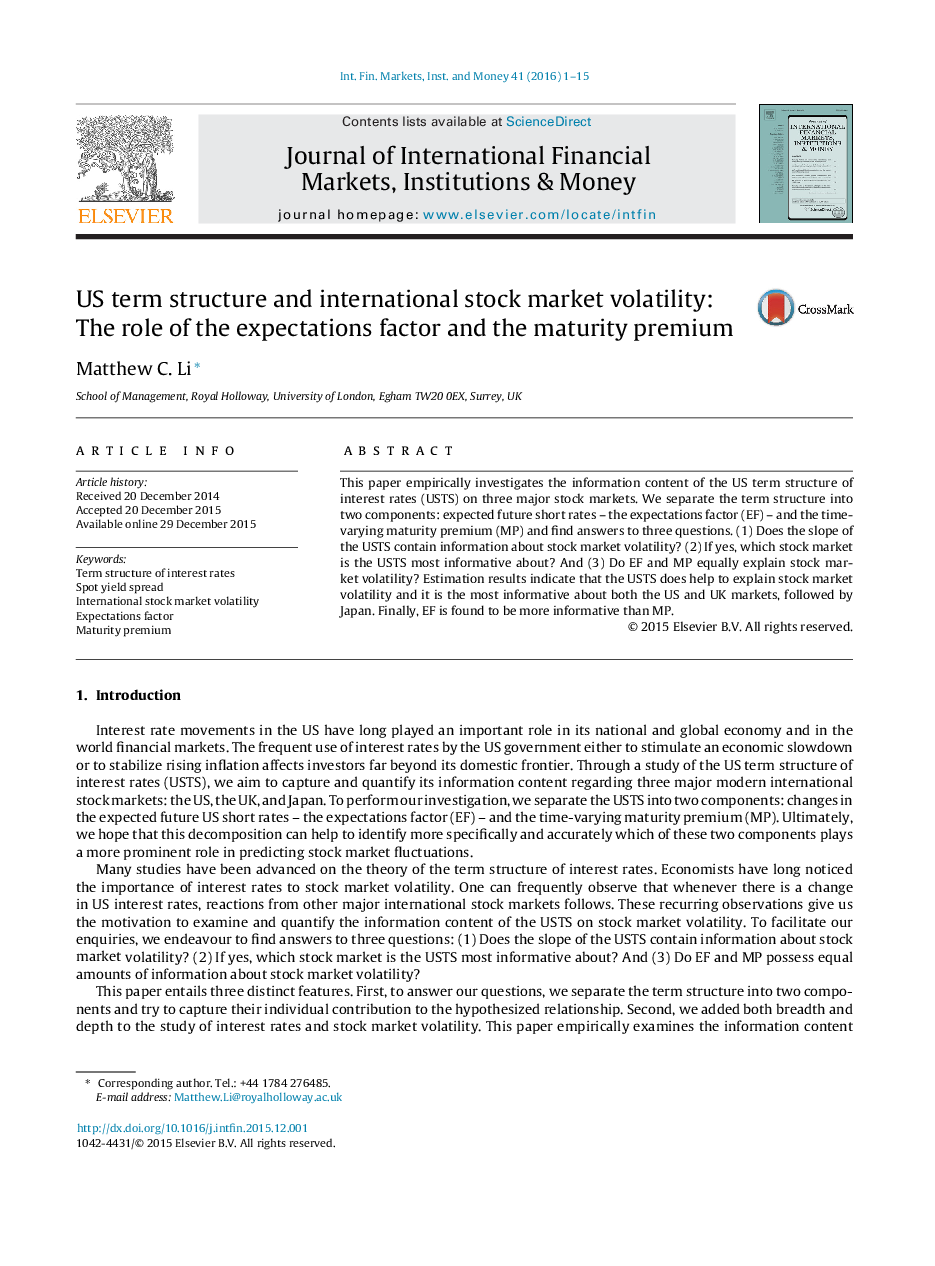| Article ID | Journal | Published Year | Pages | File Type |
|---|---|---|---|---|
| 963886 | Journal of International Financial Markets, Institutions and Money | 2016 | 15 Pages |
•We empirically investigate the information content of the US term structure of interest rates.•We separate the term structure into the expectations factor and time-varying premium.•US term structure can help to explain stock market volatility.•US term structure is most informative about the US and the UK stock market movements.•The Expectations factor contains more information about stock market volatility than the time-varying premium.
This paper empirically investigates the information content of the US term structure of interest rates (USTS) on three major stock markets. We separate the term structure into two components: expected future short rates – the expectations factor (EF) – and the time-varying maturity premium (MP) and find answers to three questions. (1) Does the slope of the USTS contain information about stock market volatility? (2) If yes, which stock market is the USTS most informative about? And (3) Do EF and MP equally explain stock market volatility? Estimation results indicate that the USTS does help to explain stock market volatility and it is the most informative about both the US and UK markets, followed by Japan. Finally, EF is found to be more informative than MP.
